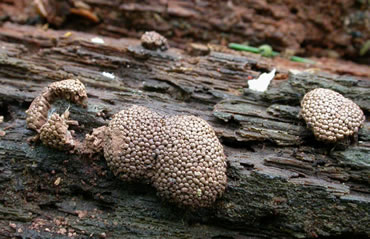Tubifera ferruginosa
Scientific name: Tubifera ferruginosa (Batsch) J. F.
Gmel.
.
Derivation of name: Ferrug- means "rusty" or "rust" and
osa means "fullness" or "abundance."
Synonyms: Stemonitis ferruginosa Batsch
Common name(s): Red raspberry slime.
Phylum: Myxomycota
Order: Liceales
Family: Reticulariaceae
Occurrence on wood substrate: Fruitbodies crowded
together and compressed, forming raspberrylike forms; June
through November.
Dimensions: Individual fruit bodies are less than 0.5 mm
wide and are up to 3-5 mm high. Compressed clusters can
be up to 15 cm or more in length.
Description: When reddish in color and compressed
together, the sporangia of this slime mold resemble red
raspberries. The cluster soon matures into a purplish and then
brownish mass at maturity resembling what Lincoff calls "a
bunch of miniature cigars."
Comments: Tubifera ferruginosa is a slime mold.
While not fungi, slime molds often form spore-bearing
structures that resemble those of the true fungi. Although
many slime mold species fruit on wood they do not form a
penetrating and absorptive mass of hyphae in the wood
substrate. Rather, slime molds form structures called
plasmodia which are naked (i.e., without cell walls) masses of
protoplasm which can move and engulf particles of food in an
amoeboid manner. Slime mold plasmodia creep about over
the surfaces of materials, engulfing bacteria, spores of fungi
and plants, protozoa, and particles of nonliving organic
matter. At some point, plasmodia convert into spore-bearing
structures. In Tubifera ferruginosa, the plasmodium
converts into a clustered mass of sporangia which compress
together to form what is called a pseudoaethalium. In such a
structure, the individual sporangia still retain their identity but
the sporangia are so tightly compressed together that they
resemble an aethalium such as that formed by Fuligo septica
or Lycogala epidendrum.
More information at Wikipedia.org:
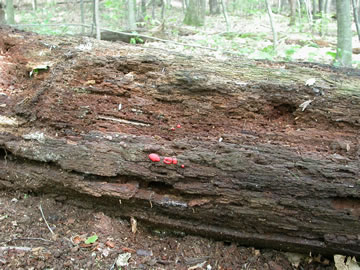
Figure 1. Tubifera ferruginosa as observed on a rotting
log.
Photo © Gary Emberger.
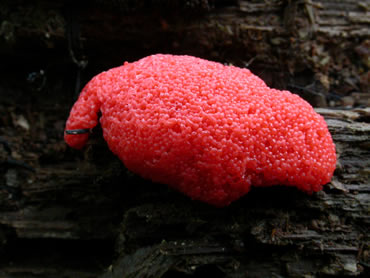
Figure 2. Red raspberry slime up close. The individual
sporangia are packed closely together.
Photo © Gary Emberger.
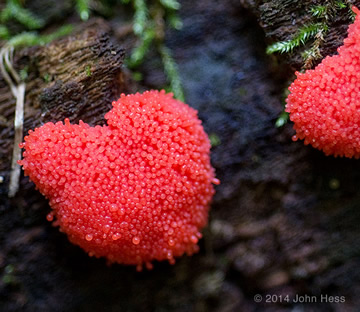
Figure 3. Two red raspberry
pseudoaethalia in which the
individual sporangia, though packed closely together,
remain separate. Photo © John Hess.
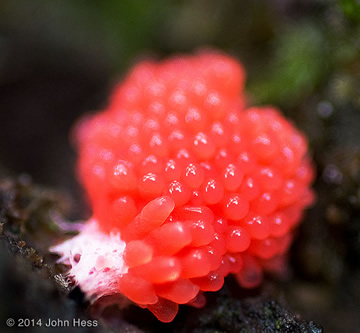
Figure 4. This closeup highlights individual sporangia
and the
white stalk-like structures bearing them.
Photo © John Hess.
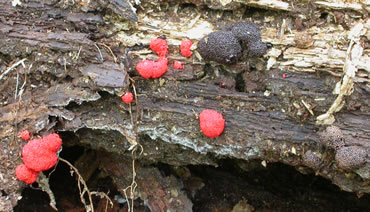
Figure 5. The dark masses to the right (both above and
below) are mature sporangia.
My keys will only work with
the
reddish stage.
Photo © Gary Emberger.
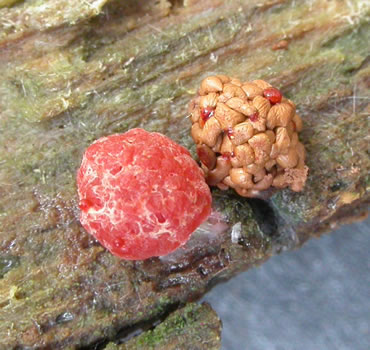
Figure 6. I believe that the tannish mass on the right with
some red on it is a maturing stage where the reddish
sporangia are maturing into the brownish stage.
Photo © Gary Emberger.
Figure 7.
At maturity, Tubifera ferruginosa looks like a
mass of brown cigars. Photo © Gary Emberger.
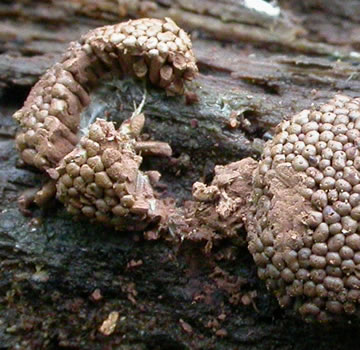
Figure 8. The "cigar" stage of Tubifera ferruginosa.
Photo © Gary Emberger.
